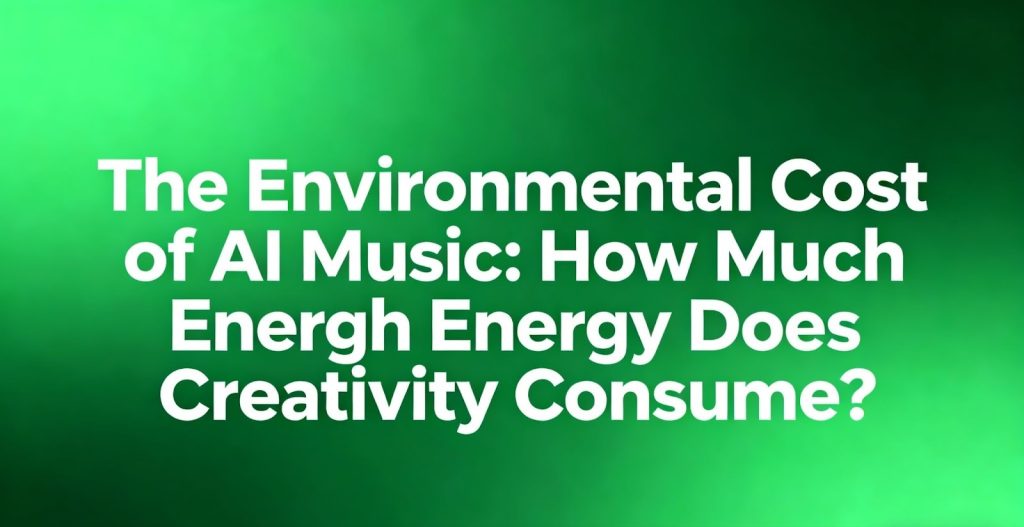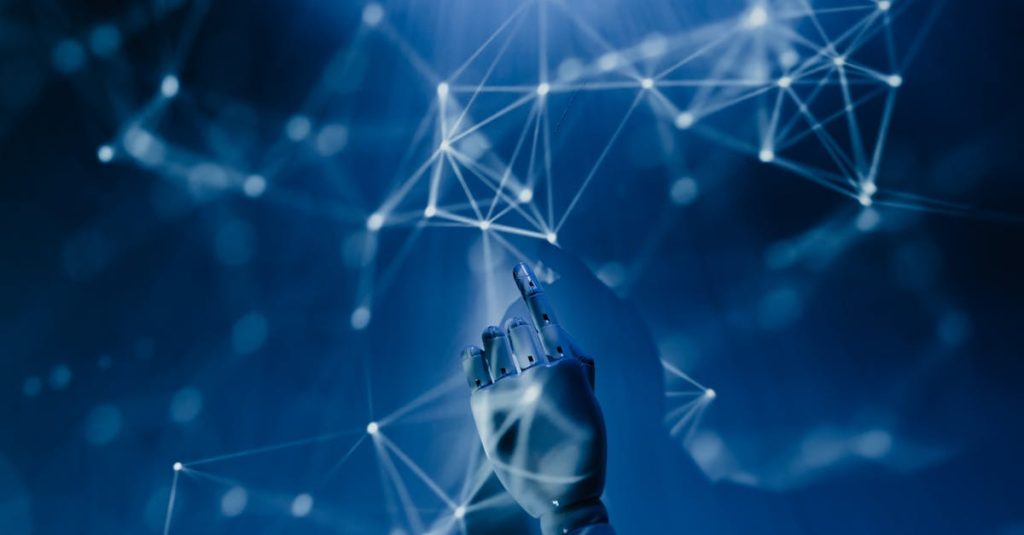AI-powered music generation unlocks new creative frontiers but carries an often-hidden environmental footprint tied to electricity and hardware lifecycles. This article unpacks the core drivers of AI music’s energy consumption, explains how carbon footprints are calculated, highlights sustainable practices, explores ethical considerations, compares AI to traditional studio processes, and peers into future trends in green AI music technology. Musicians and content creators will gain actionable insights on minimizing ecological impact while harnessing innovations from platforms like Mureka’s AI music generation service.
What Drives the Energy Consumption of AI Music?
AI music production demands substantial computing power and infrastructure, making energy consumption a critical concern. Understanding the interplay between data centers, machine learning workflows, and model complexity reveals where the bulk of electricity is spent and how creativity translates into kilowatt-hours.
How Do Data Centers Power AI Music Platforms?
Data centers host the servers and GPUs that train and run music-generation models. These facilities draw vast amounts of electricity for computing and cooling.
Key statistics on data center energy consumption:
- Global data centers accounted for roughly 1.5 percent of worldwide electricity demand in 2024 and are projected to consume up to 5 percent by 2030. (spglobal.com)
- Cooling systems can add an extra 30 percent overhead to raw compute power for every kilowatt used.
- Major cloud providers doubled their energy draw for AI services between 2017 and 2021.
These numbers illustrate that powering AI music tools involves both compute loads and supporting systems. Recognizing this energy profile leads us to examine how different AI tasks—training versus inference—impact electricity usage.
What Is the Difference Between AI Model Training and Inference Energy Use?
Training large generative music models consumes an order of magnitude more energy than generating individual tracks. Model training involves repeated iterations over vast datasets, while inference applies a trained network to create a single output.
| Task | Compute Phase | Typical Energy Draw |
|---|---|---|
| Model Training | GPU clusters | 500–1,000 MWh per project |
| Inference (Single Track) | CPU/GPU instances | 0.05–0.1 kWh per track |
Training a flagship music model can rival the annual electricity usage of dozens of households, whereas generating a single track uses about the same power as charging a smartphone twice. Understanding this divide highlights why optimization efforts often target training efficiency and model size reduction.
How Much Energy Does Generative AI Music Consume Compared to Other AI Tasks?

Generative music sits between image synthesis and large language models in energy intensity.
- Text generation average draw: 0.01–0.02 kWh per 1,000 tokens.
- Image generation average draw: 0.1–0.2 kWh per image.
- Music generation average draw: 0.05–0.1 kWh per minute of output.
Although music creation is more intensive than simple text prompts, it remains less demanding than multi-modal video synthesis. Recognizing relative positions in the AI energy spectrum helps prioritize areas for efficiency gains.
How Is the Carbon Footprint of AI Music Calculated?
Converting electricity consumption into greenhouse gas emissions reveals the true carbon footprint of AI music. This calculation depends on regional energy mixes and hardware manufacturing impacts integrated over a model’s lifecycle.
What Are the Greenhouse Gas Emissions Associated with AI Music?
When data centers draw from fossil-fuel-heavy grids, each kilowatt-hour translates into CO₂e emissions. On average:
- 0.3 kg CO₂e per kWh in coal-dependent regions.
- 0.1 kg CO₂e per kWh in mixed-energy grids.
- 0 kg CO₂e per kWh when fully renewable.
Fact: Training a mid-sized music model (300 MWh) can emit 90 metric tons of CO₂e—equivalent to driving 230,000 km in a compact car. These ps underscore the importance of cleaner electricity sources for AI workflows.
How Does Hardware Production Affect AI Music’s Environmental Cost?
Manufacturing GPUs, servers, and networking gear requires mining rare earth minerals and consumes energy for fabrication.
- Electronics manufacturing contributes roughly 10 percent of a data center’s total lifecycle emissions.
- Discarded hardware generates increasing volumes of e-waste if not properly recycled.
- Supply chain complexities add hidden carbon costs from extraction to shipping.
Acknowledging these material impacts broadens the carbon-calculation scope beyond runtime electricity to cradle-to-grave hardware footprints.
What Are the Key Statistics on AI Music’s Carbon Footprint?
Below is a concise overview of authoritative data points on AI music emissions:
| Metric | Value | Context |
|---|---|---|
| Data center share of global electricity | 1.5% (2024), up to 5% by 2030 | Projected growth with AI expansion |
| CO₂e per kWh (global average) | 0.23 kg | Weighted mix of fossil and renewable grids |
| Generative model training emissions | 100–500 t CO₂e | Depends on model size and region |
| Inference emissions per track | 0.015–0.03 kg CO₂e | Comparable to streaming a song |
These statistics highlight that improvements at each stage—from energy sourcing to hardware recycling—can yield compound carbon reductions.
What Sustainable Practices Can Reduce the Environmental Impact of AI Music?

Addressing AI music’s ecological footprint involves both technical optimizations and infrastructure shifts. Green AI practices and renewable power adoption can dramatically lower overall emissions.
How Does Green AI Technology Optimize Energy Efficiency?
Green AI emphasizes smaller, more efficient model architectures and training protocols. Techniques include:
- Model Pruning – Removing redundant parameters to cut compute.
- Quantization – Lowering numeric precision for faster, energy-light operations.
- Knowledge Distillation – Transferring performance from large to compact models.
These strategies can shrink energy needs by 50–90 percent without sacrificing musical quality. Applying them to AI music workflows ensures creative tools become progressively greener.
Why Is Renewable Energy Important for AI Music Data Centers?
Powering servers with wind, solar, or hydroelectricity eliminates grid carbon emissions. Data centers optimized for renewables often locate near clean-energy sources or purchase guarantees of origin. Shifting even half of AI workloads to green energy can cut lifecycle emissions by 30 percent or more—laying the foundation for carbon-neutral music platforms.
How Is Mureka Committed to Sustainable AI Music Creation?
Mureka’s AI music generation platform integrates efficiency and responsibility into its roadmap. The company is exploring partnerships with green data centers and evaluating optimized model variants to minimize compute. By prioritizing energy-aware algorithms and tracking carbon metrics internally, Mureka aims to offer an AI music service that balances creative empowerment with ecological stewardship.
What Ethical Considerations Surround AI Music and Its Environmental Impact?
Beyond technical fixes, AI music raises ethical questions about resource allocation, transparency, and collective responsibility in a carbon-constrained world.
What Are the Environmental Ethics in AI Music Production?
Environmental ethics in AI music involve fair access to computing resources, transparent disclosure of carbon footprints, and avoiding disproportionate impacts on vulnerable communities. Creative innovation must align with planetary boundaries, ensuring that artistic gains do not come at the cost of escalating climate risks.
How Do Industry Principles Guide Responsible AI Music Creation?
Frameworks like “The Principles for Music Creation with AI” emphasize sustainability alongside transparency and human agency. These guidelines recommend reporting energy use, adopting renewable power, and engaging stakeholders in setting environmental goals. By aligning with such principles, platforms can demonstrate domain authority and social accountability.
How Can Users Minimize Their Environmental Footprint When Using AI Music Tools?
- Adjusting generation settings to shorter sample lengths.
- Consolidating batch requests to avoid repeated model startups.
- Choosing daytime windows when renewable grid share is highest.
- Supporting platforms committed to green computing.
Adopting these practices empowers artists to create consciously and influence industry standards toward lower emissions. For example, utilizing efficient AI music tools can contribute to a reduced environmental footprint.
How Does AI Music’s Environmental Cost Compare to Traditional Music Production?
Contrasting digital AI workflows with conventional studio processes reveals both trade-offs and opportunities for waste reduction.
What Are the Energy and Carbon Differences Between AI and Traditional Music?
Traditional recording studios rely on analog gear, lighting, and travel for sessions, yielding a moderate carbon footprint per track. AI workflows centralize compute in efficient data centers, cutting physical logistics but introducing electricity-driven emissions. On balance:
- Traditional studio: 10–20 kg CO₂e per song (equipment, travel).
- AI generation: 0.02–0.05 kg CO₂e per song when powered by mixed grids.
Digital-only AI creation can slash emissions by hundreds of times compared with multi-member studio shoots.
How Does Digital-Only AI Music Reduce Physical Waste?
By existing entirely in code and cloud storage, AI tracks eliminate plastic CDs, vinyl pressing, shipping materials, and packaging waste. This dematerialization supports circular economy principles and reduces end-of-life disposal burdens—offering a clear environmental advantage over physical media formats.
What Are the Future Trends in Sustainable AI Music Technology?

Innovation in algorithms and infrastructure promises ever-leaner energy profiles for generative music tools. Emerging approaches will further align creativity with climate goals.
How Will AI Model Optimization Evolve to Lower Energy Use?
Next-generation AI models will incorporate energy budgets as a core design metric. AutoML systems may automatically balance performance and power draw, while continuous learning frameworks retrain on incremental data without full story passes—driving perpetual energy savings in model lifecycles.
What Role Will AI Play in Managing Renewable Energy and Data Center Efficiency?
AI itself can forecast clean energy availability and dynamically schedule workloads to match renewable peaks. Smart data centers will leverage machine learning to optimize cooling and server utilization, further reducing overhead. This reciprocal innovation loop positions AI as both consumer and manager of green power resources.
How Can Geographic and Scheduling Strategies Reduce AI Music’s Carbon Footprint?
Locating compute near carbon-free grids and timing high-intensity training during off-peak renewable surges can slash emissions by up to 80 percent. Artists and platforms that leverage regional clean-energy windows will unlock a new paradigm of climate-aware creativity.
Mureka and its peers stand at the forefront of this transition, harnessing technical advances and ethical frameworks to ensure AI-driven music evolves in harmony with planetary needs.
Merging artistry with ecological stewardship transforms AI music into a solution rather than a burden. By applying efficiency techniques, adopting renewables, and embracing responsible guidelines, creators and platforms can enjoy reduced carbon footprints while preserving boundless creative potential. As Mureka continues integrating energy-aware algorithms and green data partnerships, AI music will set a new standard for sustainable innovation.



